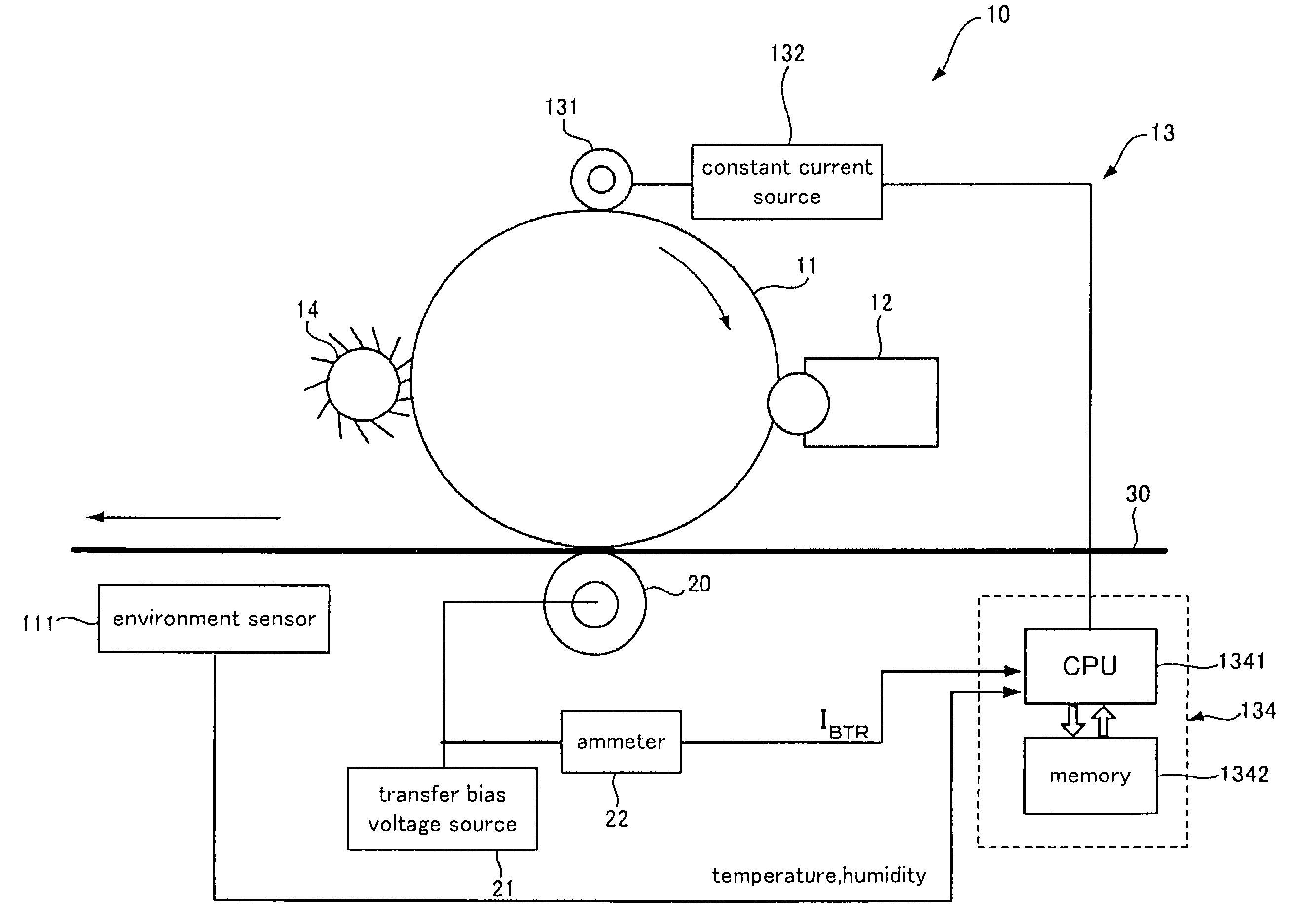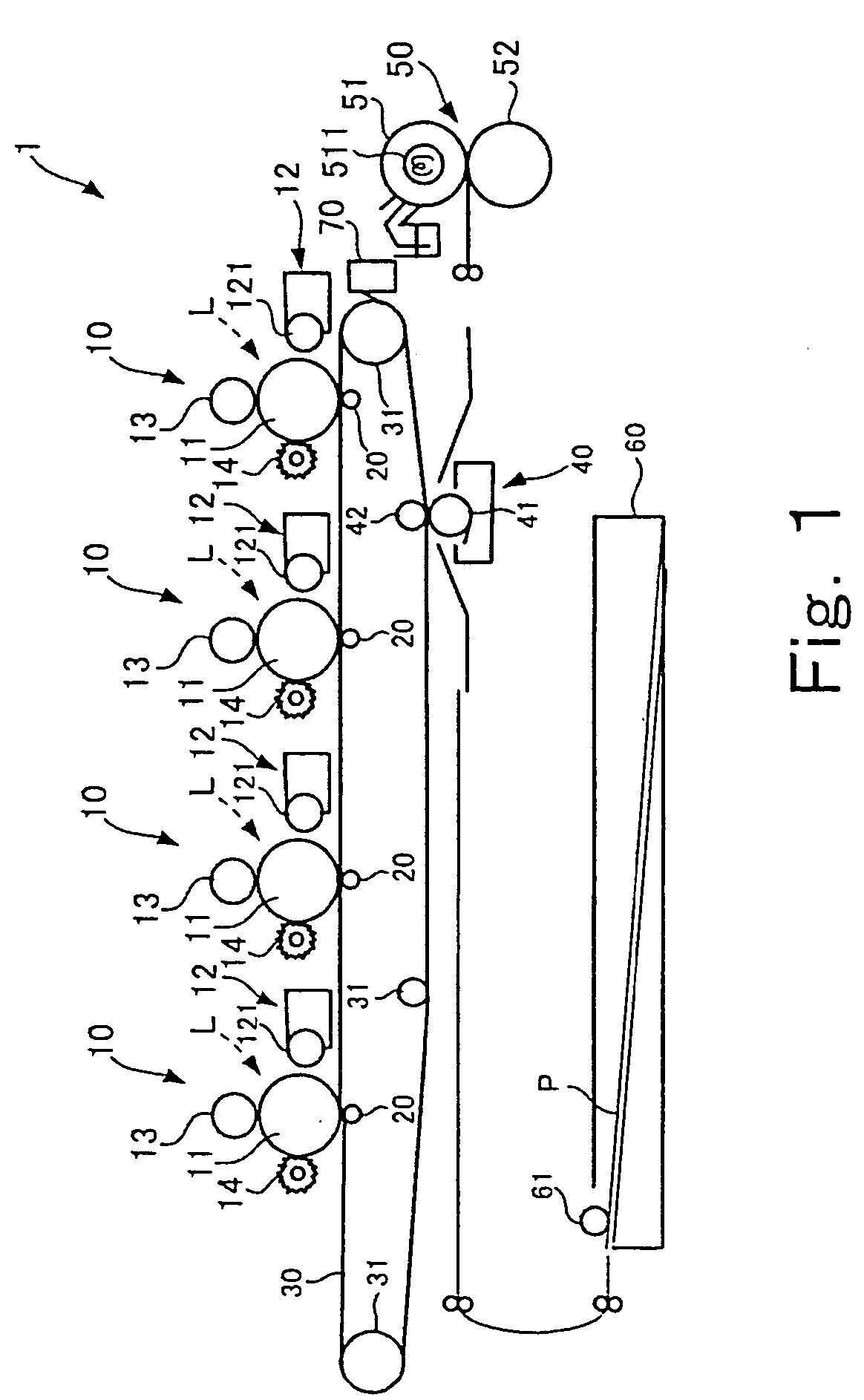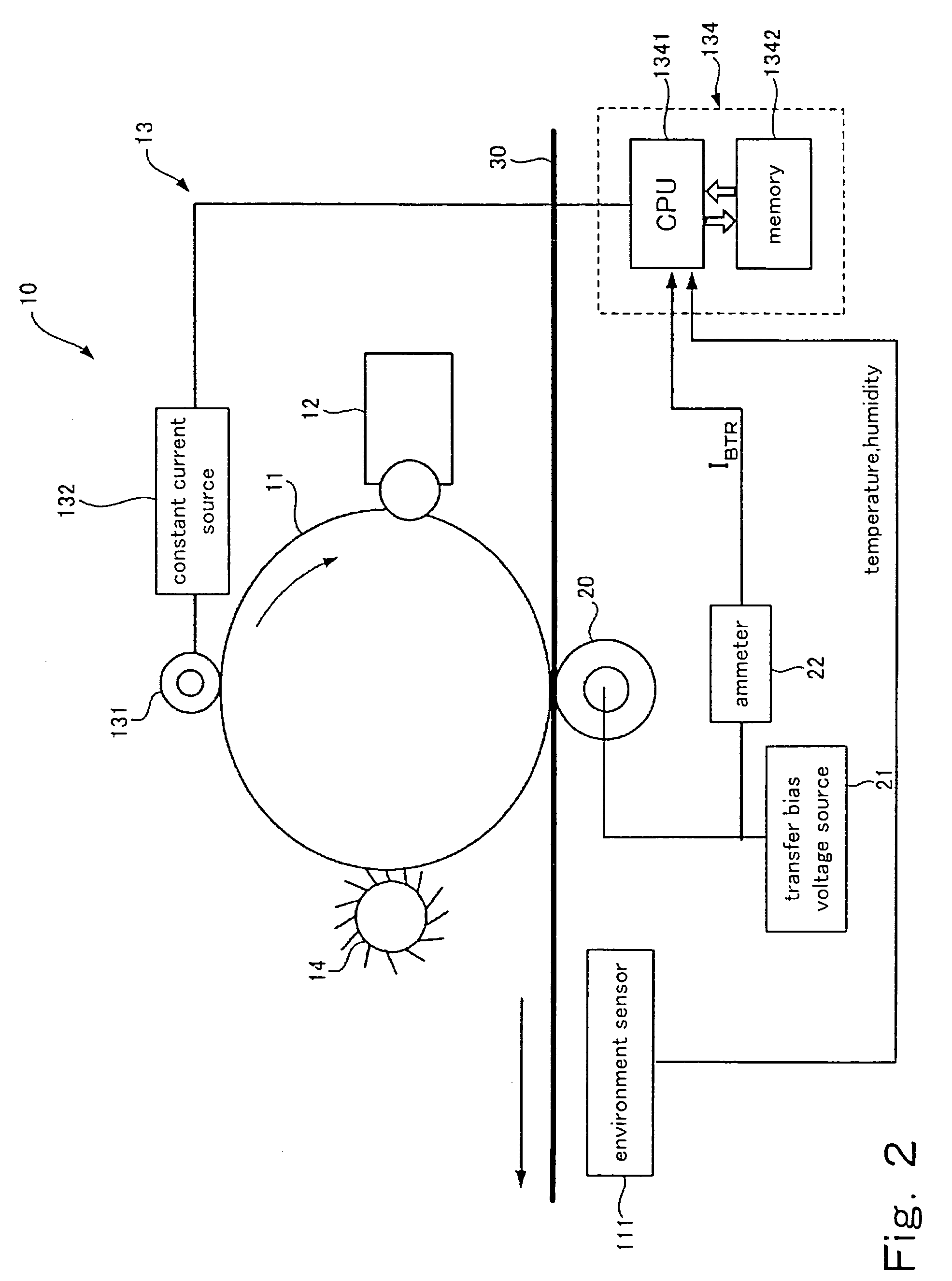Charging device and image forming apparatus
a charging device and image forming technology, applied in the direction of electrographic process apparatus, instruments, corona discharge, etc., can solve the problems of defective images, rapid degradation of photosensitive bodies, and increase in volume of discharge products adhesion to the surface of photosensitive bodies
- Summary
- Abstract
- Description
- Claims
- Application Information
AI Technical Summary
Benefits of technology
Problems solved by technology
Method used
Image
Examples
first embodiment
[0103]FIG. 1 is a schematic illustration of the configuration of image forming apparatus according to the invention.
[0104]An image forming apparatus 1 of this embodiment is a full color tandem type image forming apparatus having four toner image forming units that respectively use yellow, magenta, cyan and black toners to form toner images of the respective colors in synchronism with the movement of an intermediary transfer belt. The toner images are laid one on the other on the intermediary transfer belt, which is an intermediary medium (primary transfer) and the image formed on the intermediary transfer belt by sequentially laying the toner images is transferred onto a sheet of paper, which is a recording medium (secondary transfer), and fixed.
[0105]The image forming apparatus 1 of FIG. 1 has four toner image forming units 10, four primary transfer rolls 20, an intermediary semiconductor transfer belt 30 supported by three support rolls 31 and driven to circulate counterclockwise ...
second embodiment
[0152]Now, image forming apparatus according to the invention will be described below.
[0153]As in the case of the image forming apparatus 1 shown in FIG. 1, the image forming apparatus of this embodiment is also a full color tandem type image forming apparatus having four toner image forming units. The component members of the embodiment same as or similar to those of the image forming apparatus 1 of FIG. 1 are denoted respectively by the same reference symbols and only the characteristic parts of the image forming apparatus of the second embodiment will be described below.
[0154]FIG. 14 is a schematic illustration of the characteristic aspects of the configuration of the second embodiment of image forming apparatus.
[0155]Like FIG. 2, FIG. 14 shows a toner image forming unit 10 having a photosensitive drum 11, a developing device 12, a contact type charging device 13 and a cleaning brush 14, a primary transfer roll 20 and part of an intermediary transfer belt 30. The second embodimen...
third embodiment
[0168]Now, the present invention will be described below.
[0169]As in the case of the image forming apparatus 1 shown in FIG. 1, the image forming apparatus of this embodiment is a full color tandem type image forming apparatus having four toner image forming units. The component members of the embodiment same as or similar to those of the image forming apparatus 1 of FIG. 1 are denoted respectively by the same reference symbols and only the characteristic parts of the image forming apparatus of the third embodiment will be described below.
[0170]FIG. 16 is a schematic illustration of the characteristic aspects of the configuration of the third embodiment of image forming apparatus.
[0171]Like FIGS. 2 and 12, FIG. 16 shows a toner image forming unit 10, a primary transfer roll 20 and part of an intermediary transfer belt 30. The toner image forming unit 10 shown in FIG. 16 has a photosensitive drum 11, a developing device 12, a contact type charging device 13 and a cleaning brush 14 as...
PUM
 Login to View More
Login to View More Abstract
Description
Claims
Application Information
 Login to View More
Login to View More - R&D
- Intellectual Property
- Life Sciences
- Materials
- Tech Scout
- Unparalleled Data Quality
- Higher Quality Content
- 60% Fewer Hallucinations
Browse by: Latest US Patents, China's latest patents, Technical Efficacy Thesaurus, Application Domain, Technology Topic, Popular Technical Reports.
© 2025 PatSnap. All rights reserved.Legal|Privacy policy|Modern Slavery Act Transparency Statement|Sitemap|About US| Contact US: help@patsnap.com



